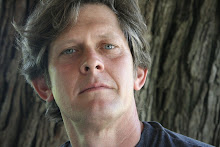
This week's newspaper column:
Sustainability – essentially – is about connections.
Take the human body for example. Life is sustained as the heart pumps blood through a connected system of veins and arteries distributed throughout the entirety of our bodies. This system works by degree in that the more those connections are disrupted, the more quality of life is degraded. Terminate the veins in the wrist and you lose a hand; block the main arteries close to the heart and you’re dead.
Translate this metaphor to all physical and social connections and you’ve got a pretty good working understanding of sustainability.
Almost four centuries ago, English writer and clergyman John Donne articulated the concept well:
No man is an Island, entire of itself;
Every man is a piece of the Continent, a part of the main.
Now how many times have we heard the word “deserted” preceding the word “island”? Ever stop to wonder why some islands are deserted? At the risk of stating the self-evident, islands tend to be deserted when they have no clear connection to the mainland and are not big enough to maintain an ecosystem hospitable to human life.
So in considering sustainable design, it’s always important to think in terms of connections. Physical connections, social connections, cultural connections, environmental connections – all are important in the manifestation of a built environment that sustains and enhances a healthy human existence.
For example, when planning and developing alternative modes of transportation in a community (meaning other ways to get around besides the automobile), the success of those systems hinges on how comprehensively everything is connected with everything else. When sidewalks are intermittent and leave some areas of heavy human activity completely unserved, or when bike lanes are planned for some neighborhoods and not others – sustainably speaking – those are destined to be dead or ailing systems and will only be utilized to a small fraction of their potential.
Conversely (and fossil fuel issues aside), automobile transportation has the very sustainable quality of having roads connecting every home with every possible service and work opportunity. In fact, it’s the only fully connected system of transportation we have in America – that’s why so many people use it.
Naysayers to sustainable development are quick to say, “Why build sidewalks? Nobody wants to walk.”
But there was a time when people made the same arguments against the automobile. I bet you didn’t know that Henry Ford fielded universal cries of “Who would ever want to ride in a horseless carriage? Where would you go?” That, obviously, was before the universal connection of our roadways.
The more connections we make, the more sustainable we become and the more options we have. And in a sustainable world, each individual’s fate is connected to the viability of everybody else.
Donne famously concludes his profound treatise on sustainability saying:
Any man’s death diminishes me, because I am involved in Mankind;
And therefore never send to know for whom the bell tolls;
It tolls for thee.





No comments:
Post a Comment